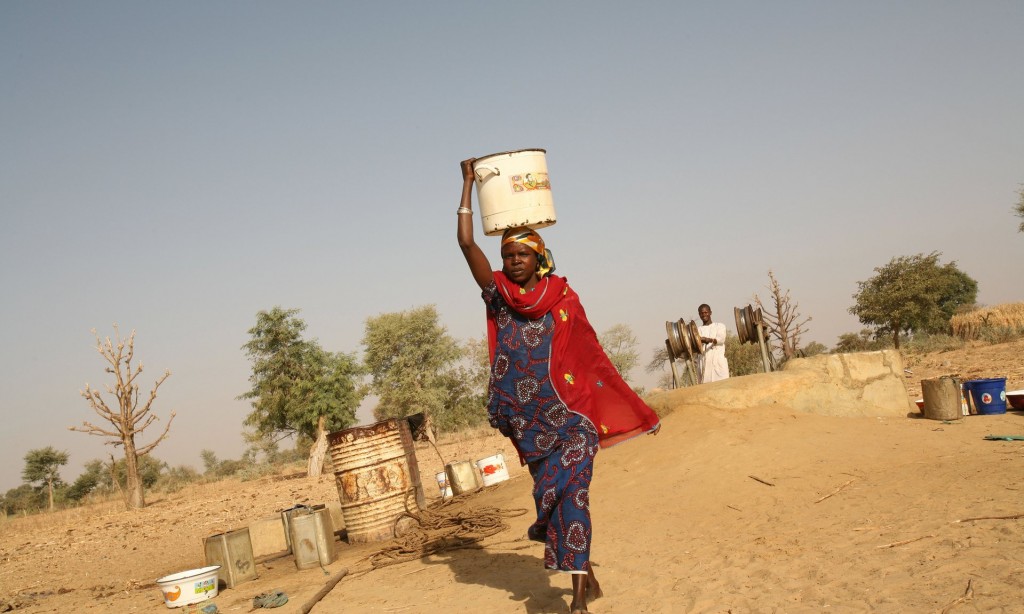We have a sexist data crisis: information we depend on to make social and economic policy, and to monitor progress, is unable to reflect the reality of the lives of women and girls.
In the low-income neighbourhoods of Lima, Peru (pdf), travel time and childcare demands stand in the way of businesswomen’s ability to complete training designed to improve their practices and income.
In Nigeria, farm households led by women grow less food than those led by men because they have limited access to fertilisers and tractors (pdf). The design of these programmes and many others are impaired by the absence of data and by bad data on women and girls.
Gender equality and the empowerment of women and girls is fifth on the list of 17 ambitions UN member states have pledged to tackle under the sustainable development goals (SDGs). Detailed targets include ending: discrimination, violence and sexual exploitation, early and forced marriage, and genital mutilation.
These practices – all harmful, many illegal – are some of the more shocking examples of gender disparity and they rightfully attract the most condemnation. But inequality can also be more subtle, and thus harder to account for.
A particular form of bias is manifested in the way we measure – or fail to measure – aspects of people’s lives. For many of the issues in the SDGs, information is not disaggregated by sex, obviating any possibility of understanding gender differences. For others, gender bias is ingrained in the measurement process.
Consider, for example, the labour force surveys that reinforce sex-role stereotypes: the male as breadwinner, the female as housekeeper. These surveys often ask only about a person’s primary economic activity. In so doing, they vastly underestimate the economic contribution of women, for whom paid work can often be a secondary occupation (with “housewife” being considered the primary activity). As a result, decision makers who depend on these surveys have little understanding about how women add value to the economy.
Absence of information about aspects of women’s lives constitutes one gap in gender data. Few surveys, if any, have been interested in measuring unpaid household work. This data gap has fed the myth that women working in the home have free time for training and other development interventions. Projects designed on this false premise have high dropout rates from female participants, as it was for the micro entrepreneurs in Lima.
Having no data is bad enough, but sub-standard data is arguably more insidious, particularly when the data systematically misrepresents reality to make women appear to be more dependent and less productive than they are.
Household surveys often obscure the role of women in family and economic life. For example, many socioeconomic and agricultural surveys of households are constructed using the (male) head of household as the anchor for the family roster. The assumption that men should be heads of household – a view explicitly stated in many survey module instructions, and held by enumerators and respondents alike – undercounts women who fulfil this role. If the number of female-led households is underreported, these households are more likely to be overlooked.
In a World Bank rural database of 16 African countries, female-headed farm households had less access to fertilisers and other agricultural inputs than male-headed ones, were less likely to have received credit in the last year, and were less likely to have land titles and own agricultural land. But change is possible.
In 2002, improved, unbiased surveys carried out in Central America showed that the proportion of female-led households in rural areas was more than twice that counted by official sources in Costa Rica and El Salvador, and more than 50% higher in Honduras and Nicaragua.
When Uganda revised its question about labour force participation in two contiguous surveys in 1992-93 – recording the main activity in one case, while expanding questions to cover secondary activities in the other – the percentage of working-age Ugandans in the labour force increased from 78% to 87%. These additional workers – 702,000 of them, the majority women – went unacknowledged in the first survey that asked only about primary activities.
The data revolution that has been called for to support the SDGs is an opportunity that should not be missed to improve data on women and girls. This will require high-level political commitment, technical advances and earmarked resources for larger investments than have been made to date.
For every political exhortation about the importance of bettering the lot of women and girls, we need a comparable demand by leaders for gender-specific information about not just health and education, but also work, personal security and freedom, and protection from environmental harms. None of this will be easy, but all is essential to realise the potential of the SDGs.
A longer version of this article can be found in Significance Magazine, the official magazine of the Royal Statistical Society and the American Statistical Association. Mayra Buvinic is a UN Foundation senior fellow working on Data2X. Ruth Levine is director of the global development and population programme at the William and Flora Hewlett Foundation and co-chair of the Data2X technical advisory group

